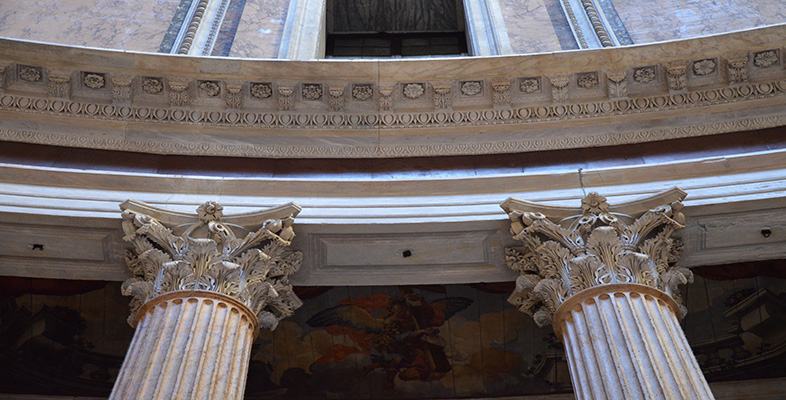Primary Source 3 Dio Cassius 53, 27.1–4
Source: Dio Cassius, Roman History, Volume VI: Books 51–55, trans. E. Cary and H.B. Foster (1917) Loeb Classical Library 83, Cambridge, MA, Harvard University Press, pp. 263, 265. © 2015 President and Fellows of Harvard College.
[p. 263] After these achievements in the wars Augustus closed the precinct of Janus, which had been opened because of these wars. Meanwhile Agrippa beautified the city at his own expense. First, in honour of the naval victories he completed the building called the Basilica of Neptune and lent it added brilliance by the painting representing the Argonauts. Next he constructed the Laconian sudatorium. He gave the name “Laconian” to the gymnasium because the Lacedaemonians had a greater reputation at that time than anybody else for stripping and exercising after anointing themselves with oil. Also he completed the building called the Pantheon. It has this name, perhaps because it received among the images which decorated it the statues of many gods, including Mars and Venus; but my own opinion of the name is that, because of its vaulted roof, it resembles the heavens.Footnote 1Agrippa, for his part, wished to place a statue of Augustus there also and to [p. 265] bestow upon him the honour of having the structure named after him; but when the emperor would not accept either honour, he placed in the temple itself a statue of the former Caesar and in the ante-room statues of Augustus and himself. This was done, not out of any rivalry or ambition on Agrippa’s part to make himself equal to Augustus, but from his hearty loyalty to him and his constant zeal for the public good; hence Augustus, so far from censuring him for it, honoured him the more.
Footnotes
- 1 The present Pantheon, as is now recognized, dates from the reign of Hadrian. The vast rotunda is surmounted by a dome, in the centre of which there is a circular opening nearly thirty feet in diameter for the admission of light.Back to main text
